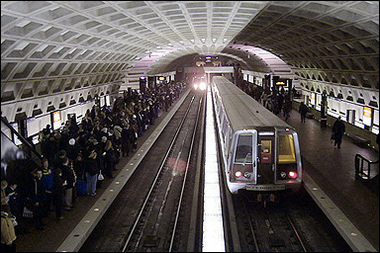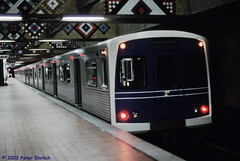The Transit “Field of Dreams”: If You Operate It, Will They Come?
 Patrons crowd the platform at the Washington Metropolitan Area Transit Authority's Metro Center stop (AFP/File/Karen Bleier) .
Patrons crowd the platform at the Washington Metropolitan Area Transit Authority's Metro Center stop (AFP/File/Karen Bleier) .Abstract of the report by Leroy W. Demery, Jr. and Michael D. Setty. From the Public Transit website.
It is often claimed that the magnitude of the “transit riding habit” in a given city or urban region depends primarily on factors outside the control of political decision-makers and transit providers. This point of view is represented in a large percentage of academic literature dealing with transit written in the last forty years, including key works such as Meyer, Kain, and Wohl (1962), Kain (1988), and Pickrell (1992), and by prominent transit critics such as Wendell Cox and Randal O’Toole, funded by conservative “think tanks."
The extreme opposite point of view is presented by Australian transit advocate and academic Paul Mees in his 2000 book A Very Public Solution –that the magnitude of transit patronage in a given urban area is primarily a function of the quality and quantity of service–may seem perfectly obvious to transit advocates and professionals. But this viewpoint is alien to large segments of the automobile-dependent American public, transportation academics, and transit opponents.
Evidence examined by the authors supports the Mees viewpoint in principle, but with caveats under U.S. conditions.
 Baltimore (MTA) Subway, Lexington Market Station. Where is everybody? Photo via NYC Subways (Subways & Light Rail Around the World).
Baltimore (MTA) Subway, Lexington Market Station. Where is everybody? Photo via NYC Subways (Subways & Light Rail Around the World).



0 Comments:
Post a Comment
<< Home